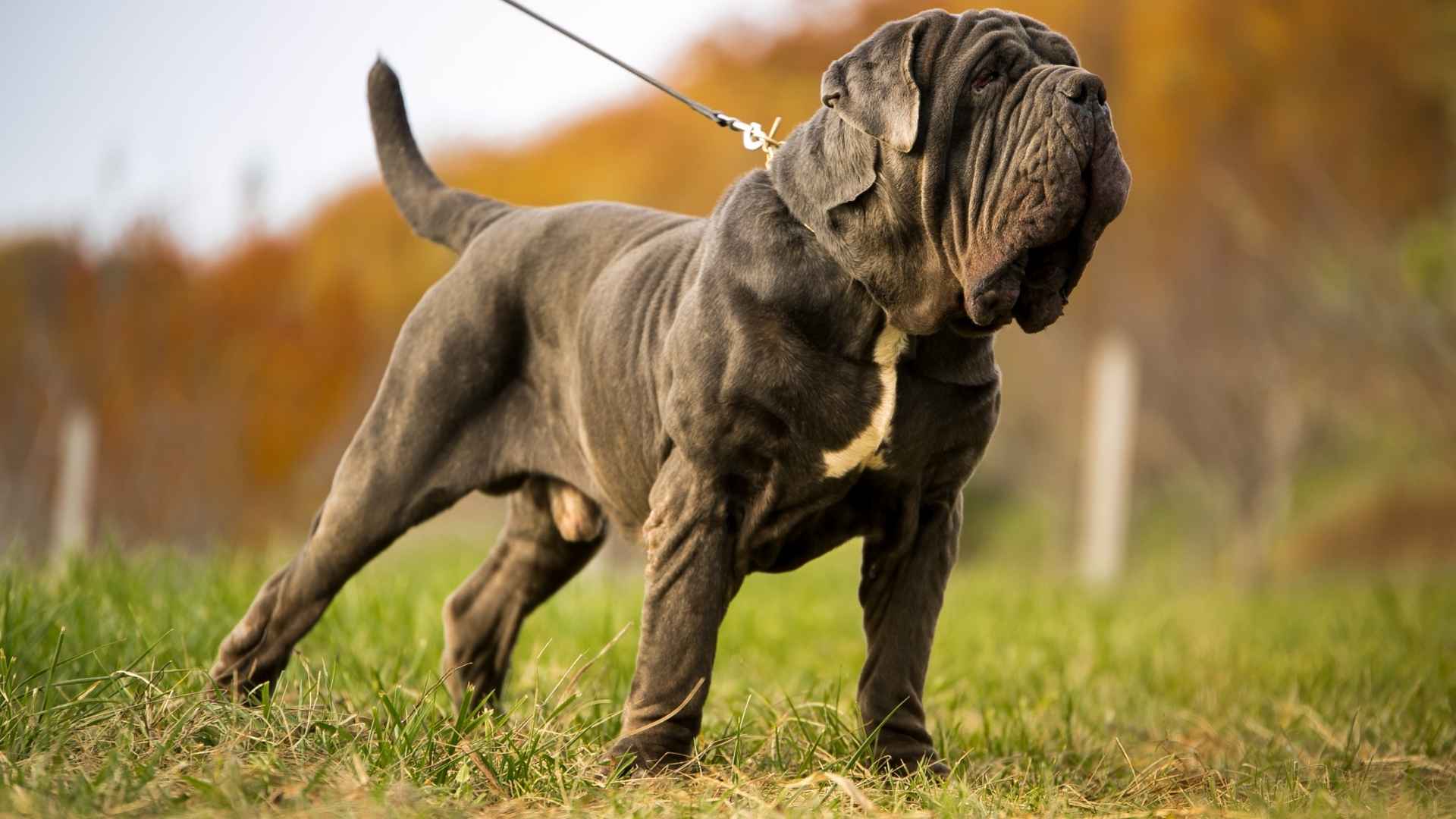When it comes to dogs, sometimes bigger is better—especially if you love long hikes, outdoor adventures, and a pup who can keep up with your pace. But forget the image of the lazy big dog lounging on the couch all day. Some extra-large dog breeds are surprisingly active, athletic, and bursting with energy from sunrise to sundown.
Giant dogs make great security companions thanks to their imposing size, which naturally commands respect—a fact they’re well aware of. Their large build also contributes to their courage. However, this doesn’t mean they’re aggressive without reason. In fact, these giant breeds are often incredibly patient and nurturing, making them wonderful “babysitters” who are kind and tolerant around children.
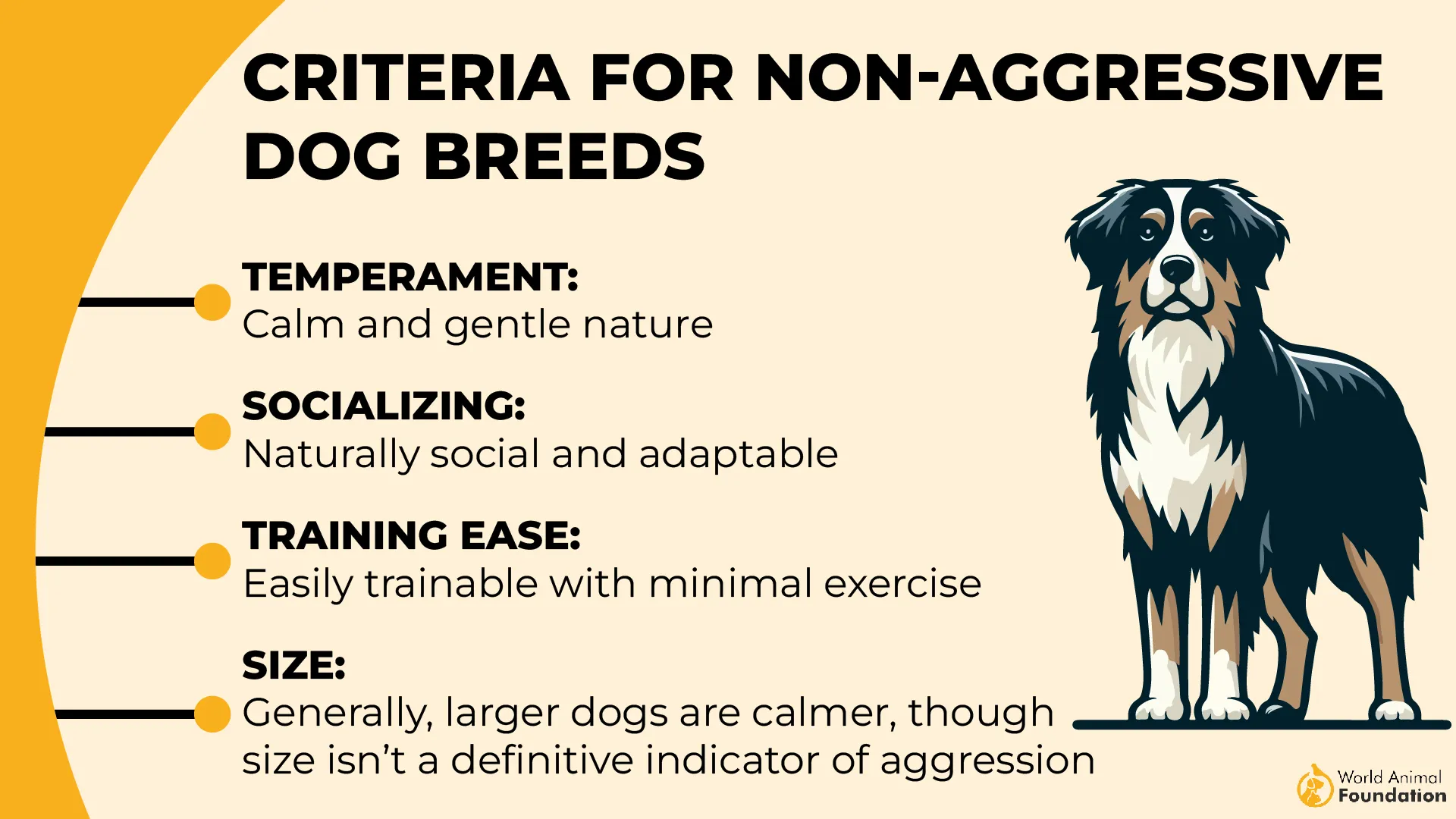
The large breeds have stamina, strength, and spirit in spades. They thrive on exercise and outdoor time, often making wonderful companions for active families, solo adventurers, or anyone who believes a dog’s size should match their lifestyle. Sure, they may take up more space on the couch (or hog the backseat of the car), but their devotion and drive are unmatched.
Here, we’re spotlighting the XL breeds that don’t just look impressive—they live big, move fast, and need room to roam. Whether you’re seeking a running buddy, hiking partner, or just a giant dog with a heart as huge as their paws, you’ll find the perfect match here.
Get ready to discover the most giant dog breeds who are as adventurous as you are—big bones, big energy, and even bigger love.
Active XL Dog Breeds
1. Leonberger
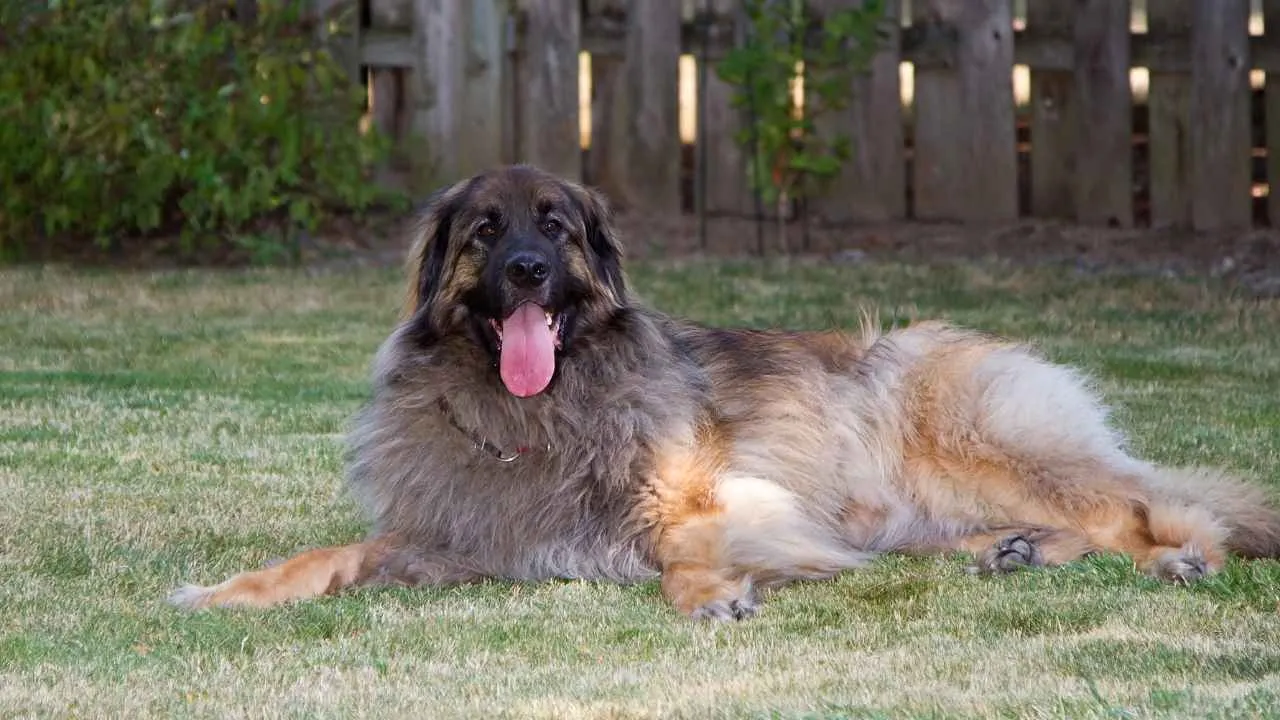
Big, fluffy, and majestic—like a lion with a soft side.
Height: 25.5–31.5 inches (65–80 cm)
Weight: 90–170 pounds (41–77 kg)
Looking for a giant, lovable fluffball with the heart of a protector? Say hello to the Leonberger—a Molosser breed known for its strength, smarts, and surprisingly polite snoring habits.
With a big, rounded head, droopy ears, and a solid jawline, Leonbergers have a majestic look that matches their calm yet courageous nature. They’re not aggressive, but they will step up to defend their loved ones if needed. Think of them as an affectionate breed who’d rather sniff the yard than start a fight.
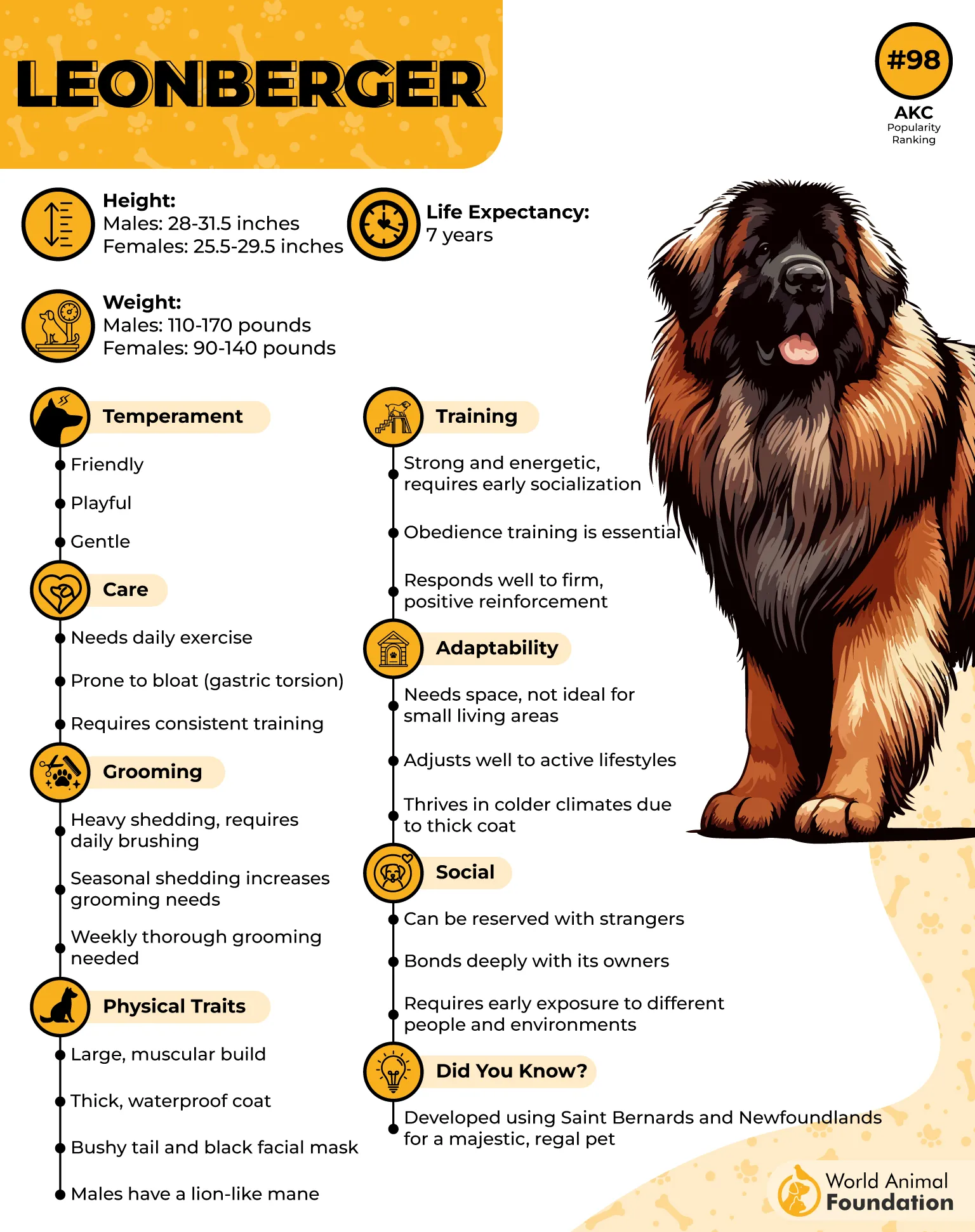
This giant breed loves the outdoors—sniffing, exploring, and occasionally showing off their playful side. They’re polite with other animals, a little shy at first, but never rude. One of their best traits? They’re quiet. Not big on barking, and definitely not into dramatic snores. Win-win!
Leonbergers need space—a big yard or a countryside home is ideal. While they’re generally active, they sometimes need encouragement to get moving (cue the treat bag).
Three walks a day or a good run is recommended to keep them fit and fabulous. Oh, and they don’t do well in kennels—these dogs want to be near you, always, says Hillspet.
Bonus: Some Leonbergers are amazing swimmers and have even done water rescues. Lifeguard dog, anyone?
2. Neapolitan Mastiff
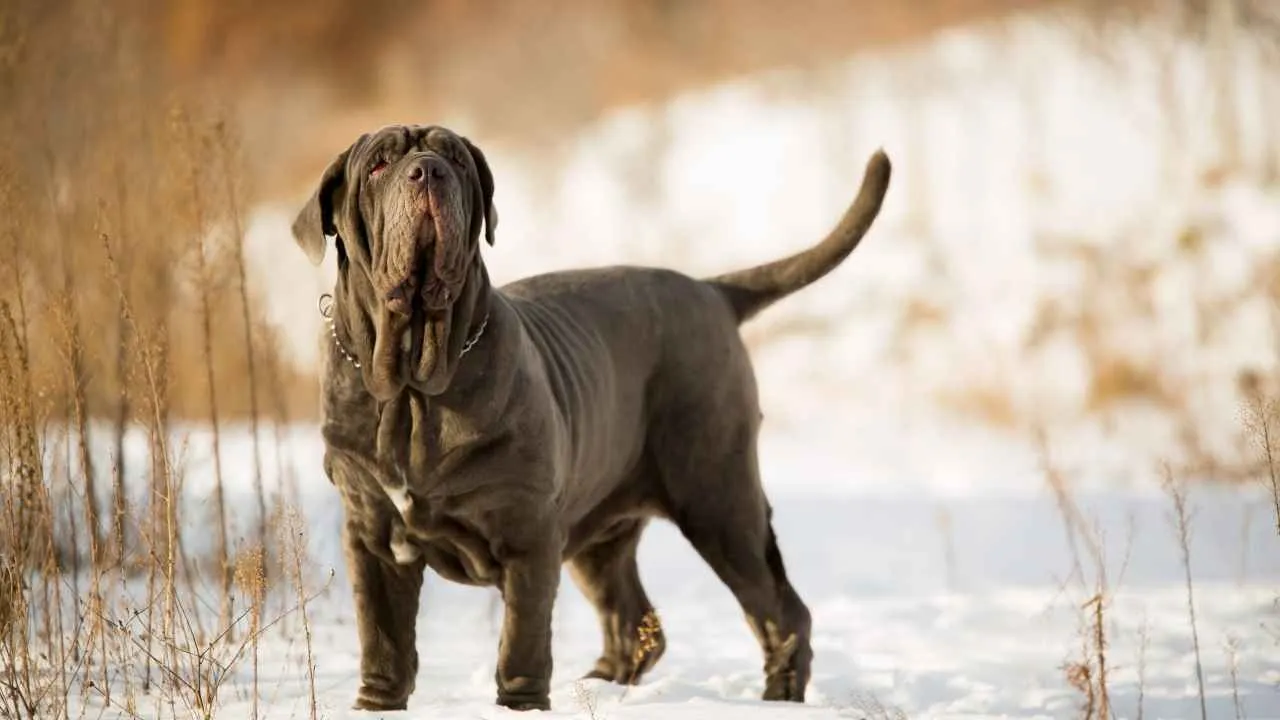
All wrinkles and muscles—looks like a bouncer, loves like a teddy bear.
Height: 24–31 inches (61–79 cm)
Weight: 110–150 pounds (50–68 kg)
If you like your dogs big, bold, and a little bit drooly, meet the Neapolitan Mastiff—a living fortress wrapped in wrinkles. This Molosser breed is all about presence.
With loose, saggy skin, deep-set eyes, and a serious “don’t mess with me” face, the striking appearance looks like ancient Roman warriors who accidentally walked into modern times.
Despite their tough exterior, Neapolitan Mastiffs are calm with a loyal nature, and are extremely affectionate with their families.
They’re natural guardians—quiet, observant, and always watching—but not prone to unnecessary barking or aggression. They’re not out to pick fights, but let’s just say intruders won’t be sticking around.
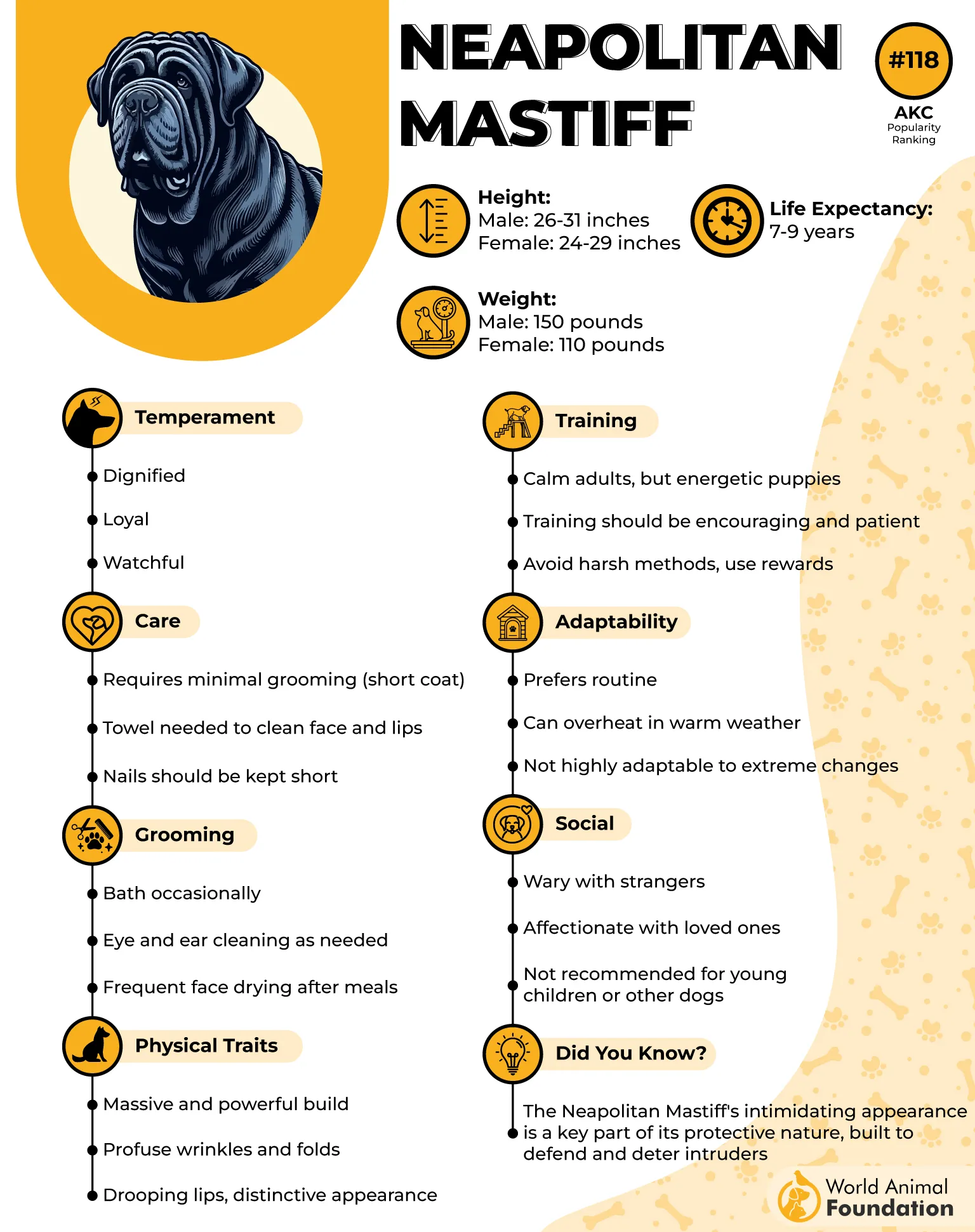
These energetic dogs need space, both for their size and their tendency to patrol their territory like four-legged security guards.
While not hyperactive, they benefit from regular walks and light play to keep their muscles strong and their joints healthy. Too much intense exercise, especially at a young age, isn’t recommended due to their large frame.
Socialization is key—early and often. They can be wary of strangers and other dogs, but with the right training, they become well-mannered companions. And let’s be honest: those wrinkles make them look grumpy, but inside, they’re big-hearted softies.
Fair warning: drool happens. A lot. Keep a towel handy and embrace the slobbery love.
3. Irish Wolfhound
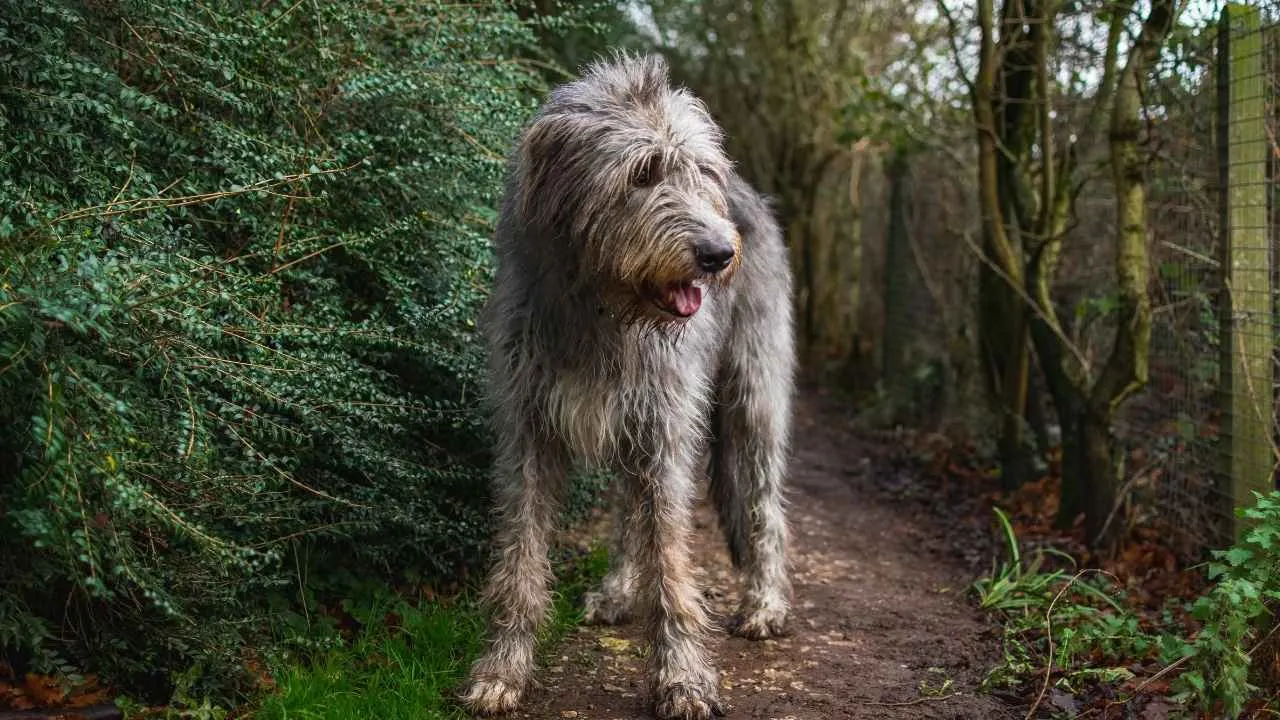
The gentle giant with couch potato energy and the legs of a runway model.
Height: 30–35 inches
Weight: 105–180 pounds
Tall, noble, and surprisingly chill, the Irish Wolfhound is the gentle giant of the dog world. Standing at eye level with some kitchen counters, these active dogs have an elegant, almost regal presence… until they spot a squirrel. Then it’s game on.
Despite their towering height and history as fierce wolf hunters, today’s Irish Wolfhounds are known for their calm, affectionate nature. They’re fantastic family dogs—kind with kids, friendly with other pups (though smaller dogs might do a double-take), and always up for a good cuddle on the couch. Yes, a couch. Your couch.
That said, these dogs do come with a strong prey drive. So while they’ll happily ignore the mailman, your neighborhood rabbit might not be so lucky. It’s best to keep them on a leash or in a securely fenced area when outdoors.
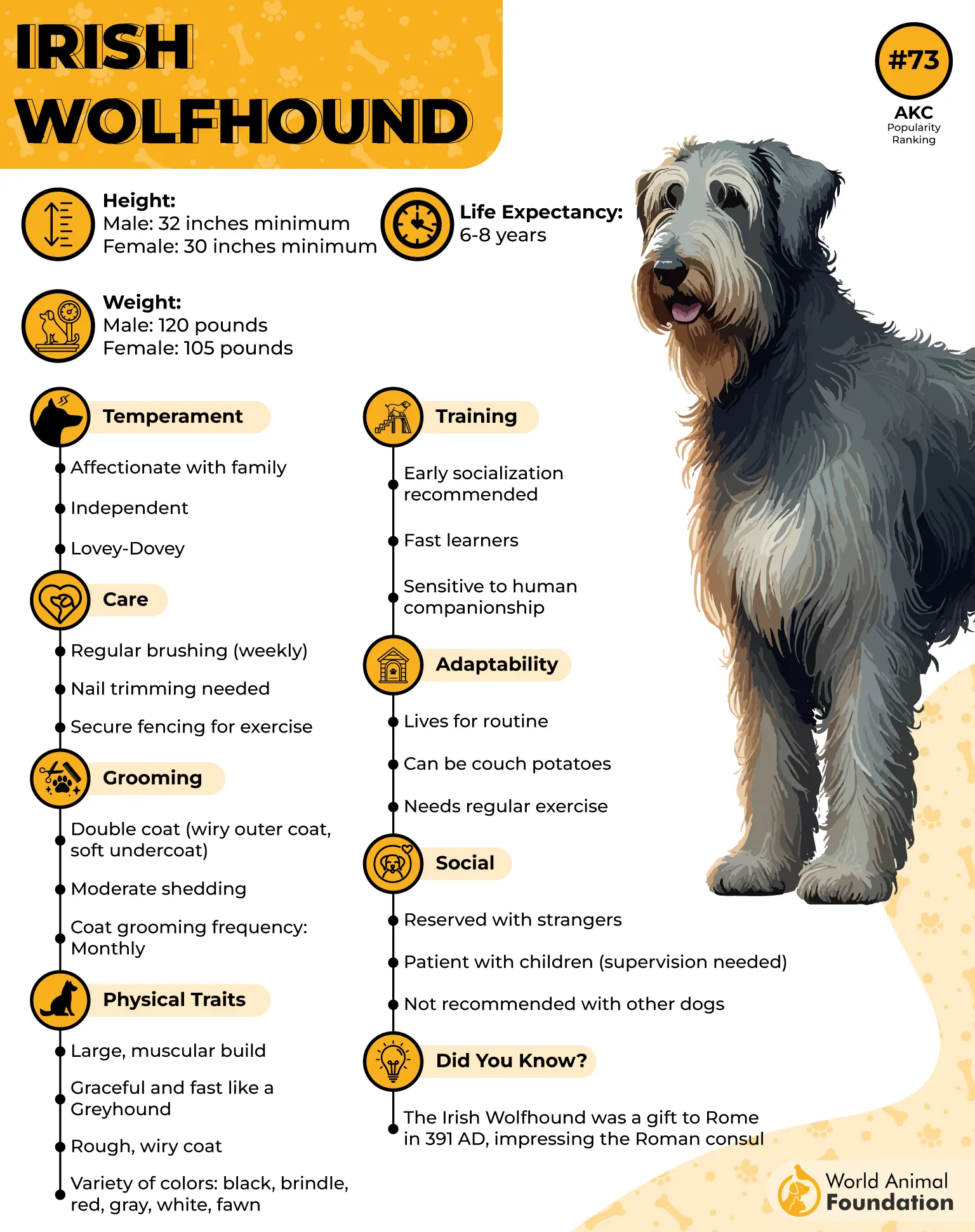
Regular exercise is key, even for these so-called “couch potatoes.” They might lounge around like oversized throw pillows, but daily walks or gentle runs help keep their massive frames healthy. Mental stimulation is important too—think puzzle toys, scent games, or just exploring new trails.
And don’t forget the space factor. Irish Wolfhounds need room to stretch out—both during zoomies and nap time. A studio apartment just won’t cut it.
Purina states they get along well with other dogs, though some might be a little spooked by their size. Understandable—Irish Wolfhounds can easily be mistaken for small horses.
4. Scottish Deerhound
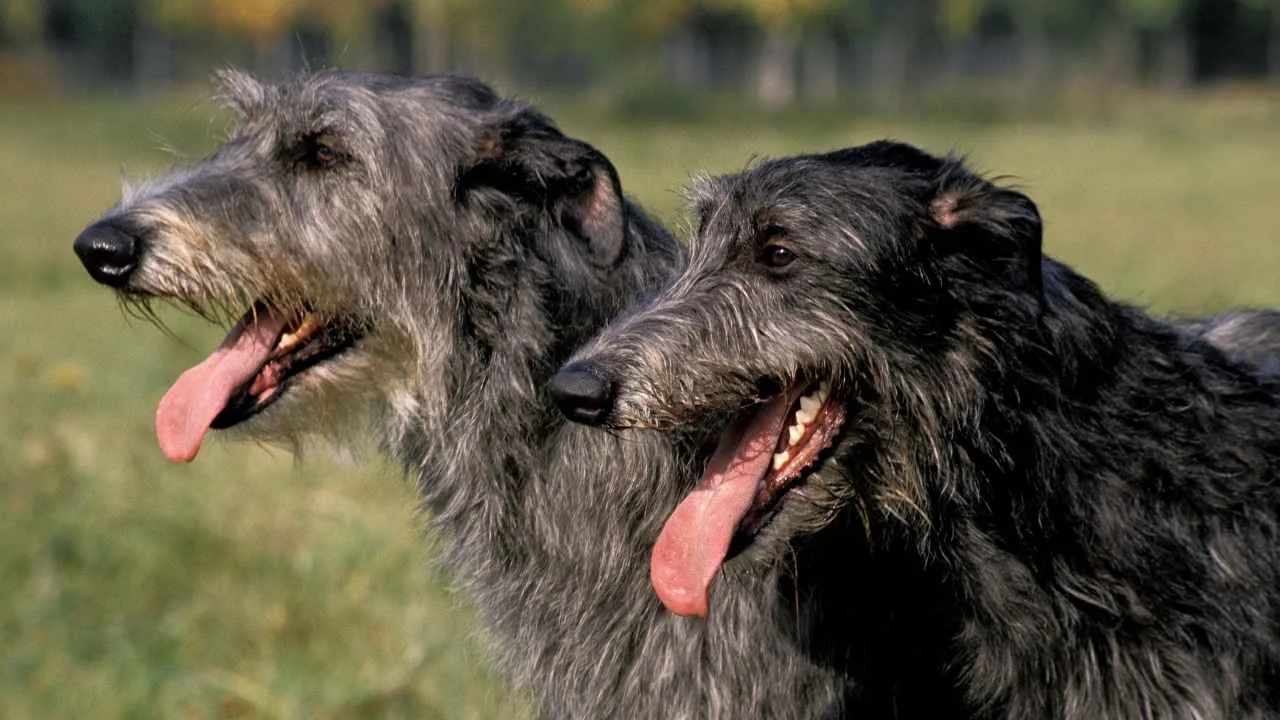
Fast, dignified, and just a little stubborn—like a greyhound in a knight’s armor.
Height: 28–32 inches
Weight: 75–110 pounds
Meet the Scottish Deerhound—an ancient and rare breed that once ran alongside Scottish nobles, chasing down deer like it was just another Tuesday.
These highly energetic dogs are basically built for speed, with some clocking in at 40–45 mph under the right conditions. That’s right—your Deerhound might not just outrun you; it could probably outrun your car in a school zone.
Despite their speed and size, Scottish Deerhounds are surprisingly laid-back. They’re not big barkers, so if peace and quiet is your thing, they’ll fit in just fine. Don’t expect much noise—unless you’re out of treats.
Now, let’s talk personality. Deerhounds are sweet, dignified, and affectionate—but training them? That’s another story. They’ve got a mind of their own, which means recall commands are more like suggestions. Not impossible to train, but let’s just say consistency and patience will be your new best friends.
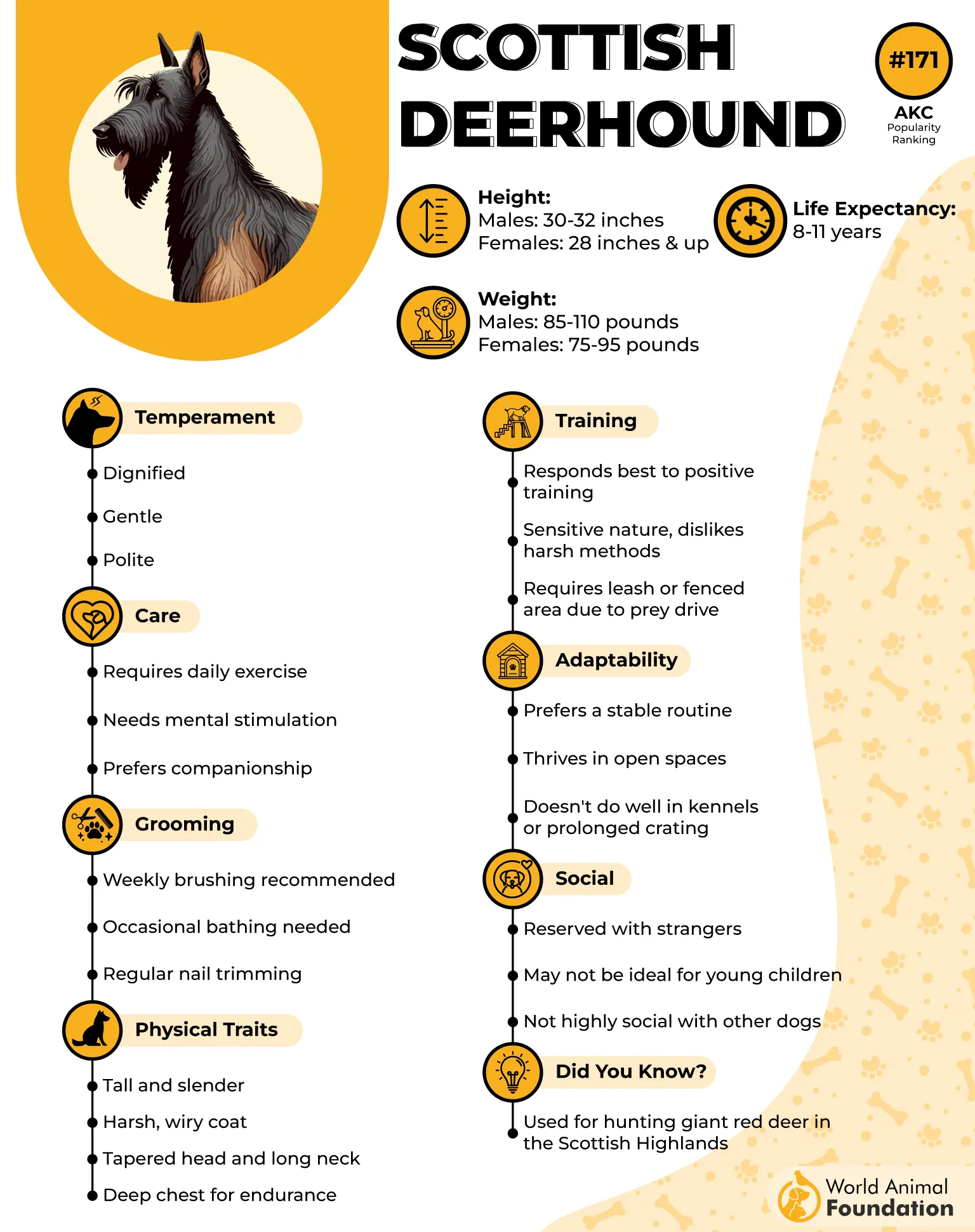
Exercise is a must. These hounds might enjoy a good nap on the couch, but they were born to run and need space to stretch their long legs. A securely fenced yard is a must—unless you want to see what 45 mph looks like in real life as they chase a squirrel into the next county.
Once teetering on the edge of extinction in the late 1800s, Scottish Deerhounds are now considered a rare and cherished breed. Owning one is kind of like having a piece of history curled up at your feet—except it snores a little and sheds a lot.
5. Borzoi
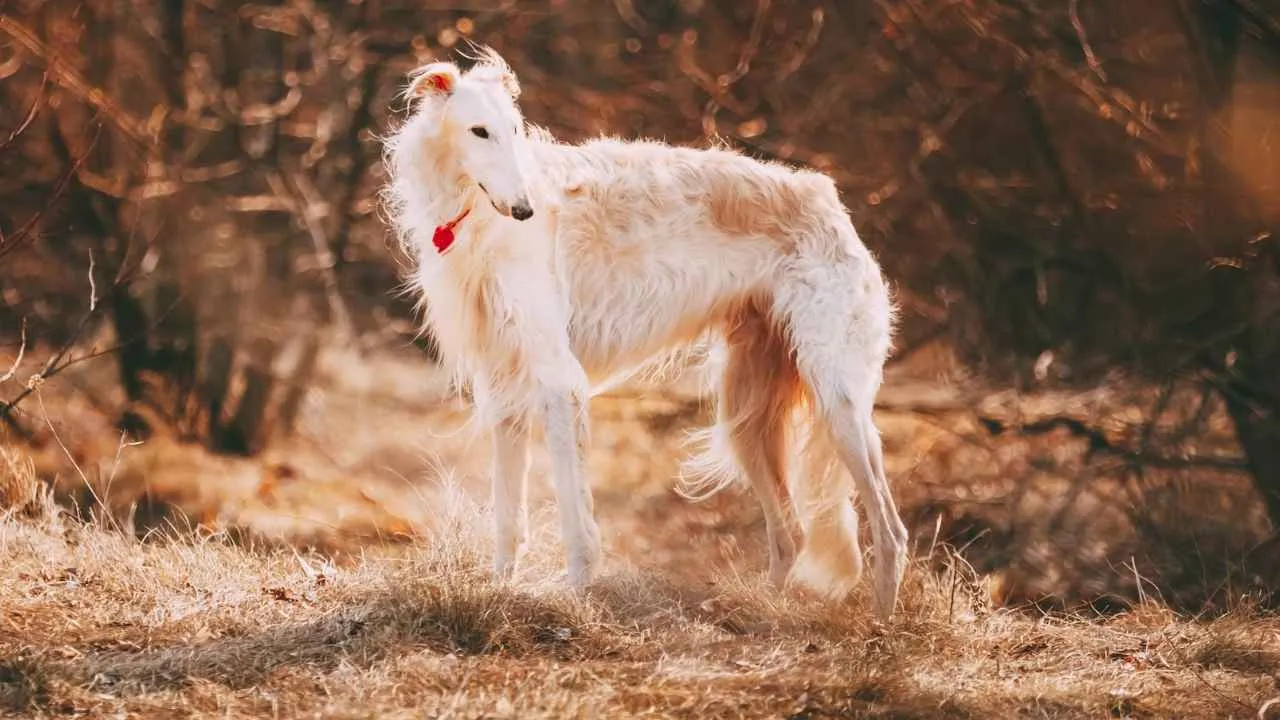
Elegant and aerodynamic—don’t let the grace fool you, they’ll zoom off in a second.
Height: 26–32 inches
Weight: 60–105 pounds
Elegant, swift, and a little dramatic—the Borzoi, also known as the Russian Wolfhound, is the supermodel of the dog world. With long legs, silky fur, and a dignified attitude, this breed was literally bred to chase wolves. Today, they’re more into chasing tennis balls and soaking up compliments.

Borzois may look like aristocrats, but they’re actually total softies who thrive on human companionship. They’ll follow you from room to room like a slightly oversized shadow—just don’t expect them to follow commands with too much enthusiasm. They’re independent thinkers, after all.
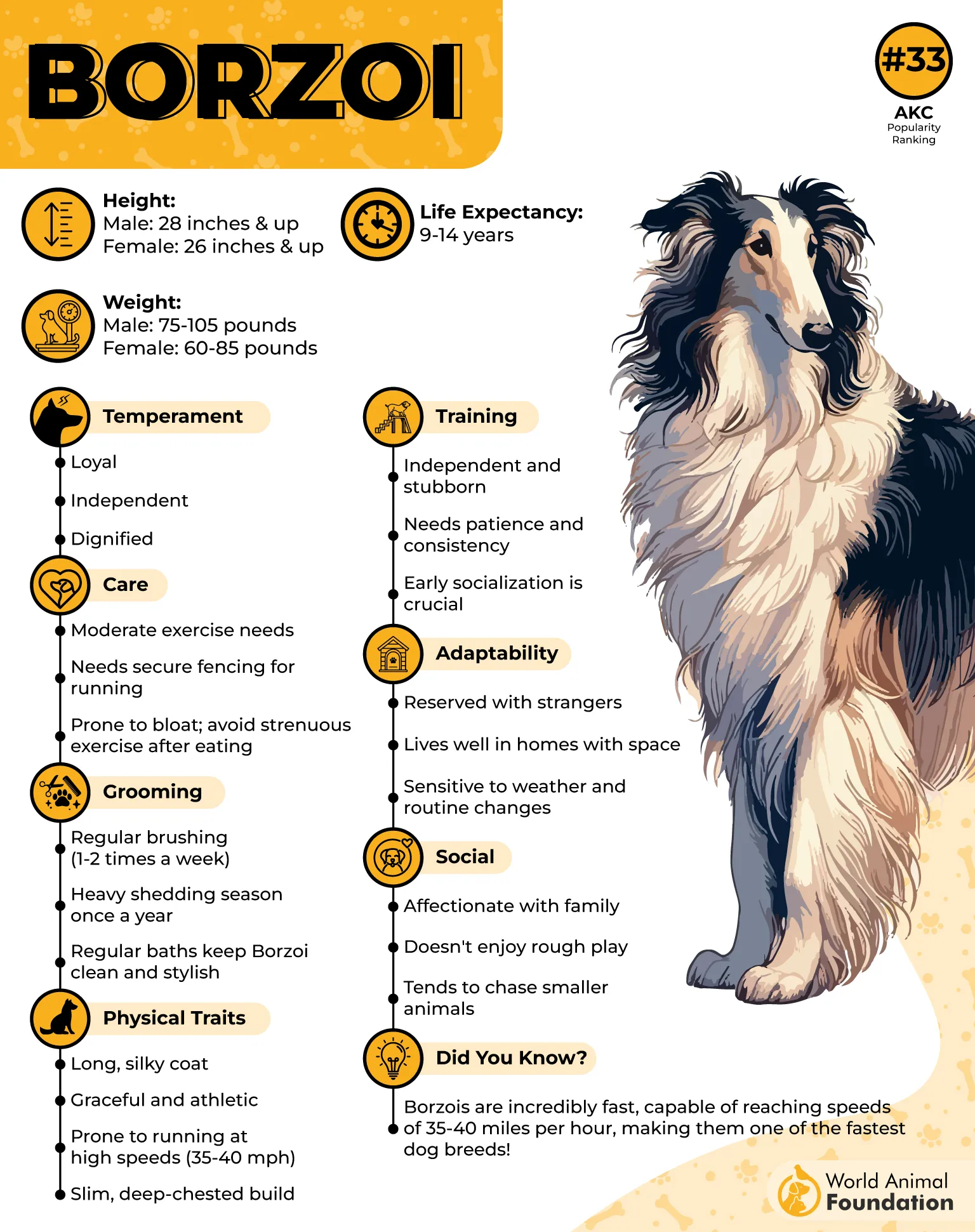
Despite their graceful and lazy-at-home demeanor, Borzois are surprisingly athletic. These dogs can run fast, and we mean really fast. So, if you let them off-leash, make sure it’s in a secure area, or you’ll be organizing a search party for your high-speed hound.
The biggest challenge with Borzois is ensuring they get enough physical activity. Ideally, they need access to a spacious, securely fenced area where they can stretch their legs and run freely.
Since they were originally bred to chase prey, it’s important not to let them off-leash in open spaces—they might spot a small animal and take off in pursuit before you can say “sit.”
According to PDSA, your Borzoi needs at least an hour of exercise a day, ideally split into a couple of walks with plenty of exciting places to sniff. A good run in a safe space is also a must to keep them healthy and happy.
Quiet and calm indoors, Borzois don’t bark much—they’re more likely to judge silently than shout. They also have a cat-like streak and enjoy lounging in style after a good workout.
6. Great Dane
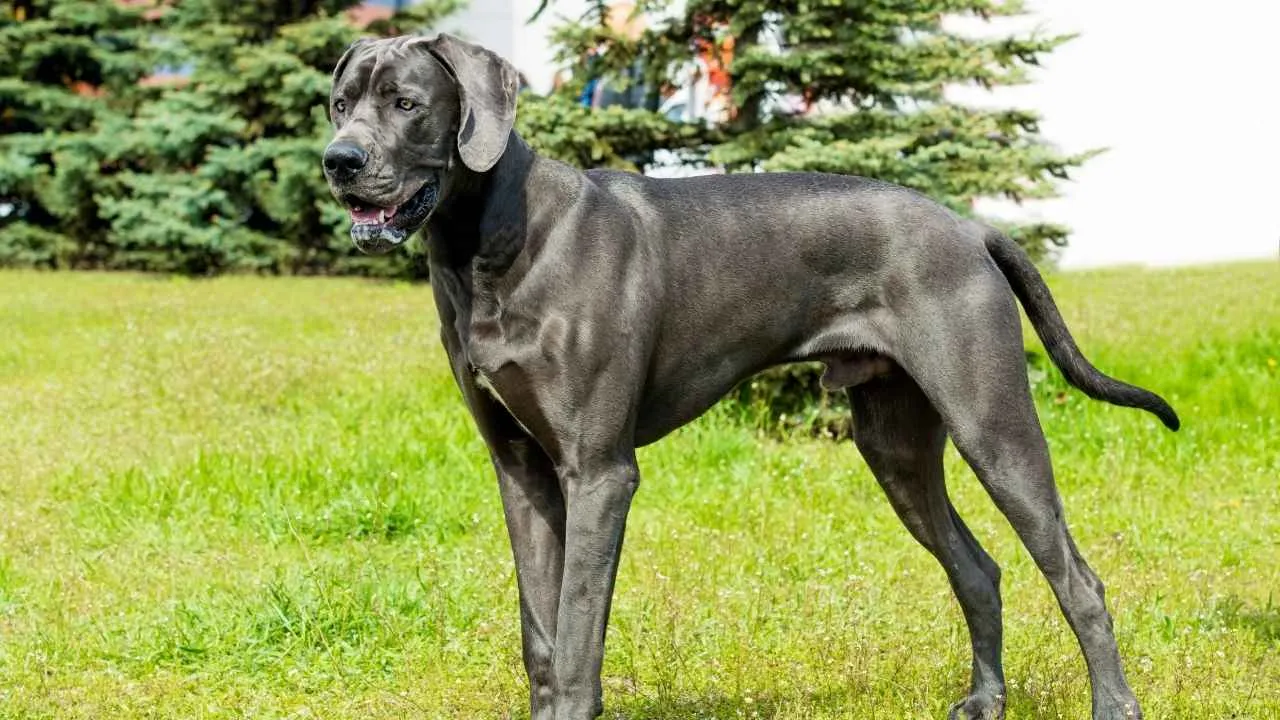
The “Apollo of Dogs”—half dog, half horse, all heart.
Height: 28–34 inches
Weight: 110–175 pounds
Once bred to hunt bears and boars (yes, really), the Great Dane has since retired from the wild life and settled into the role of gentle giant—and proud couch hog. Don’t let the towering size fool you. This affectionate dog is often called the “world’s largest lapdog” for good reason. If you sit down, there’s a solid chance your Dane will try to squeeze onto your lap like it’s a Chihuahua.
Surprisingly adaptable, Great Danes can thrive in both spacious homes and apartments—as long as they get daily walks and a chance to stretch those mile-long legs.
Their calm demeanor and friendly personality make them a hit with families, though don’t be surprised if strangers cross the street when they see your horse-sized dog casually trotting beside you.
Great Danes are moderately playful and need ample space to move around. Daily long walks—ideally twice a day—are essential to meet their exercise needs.
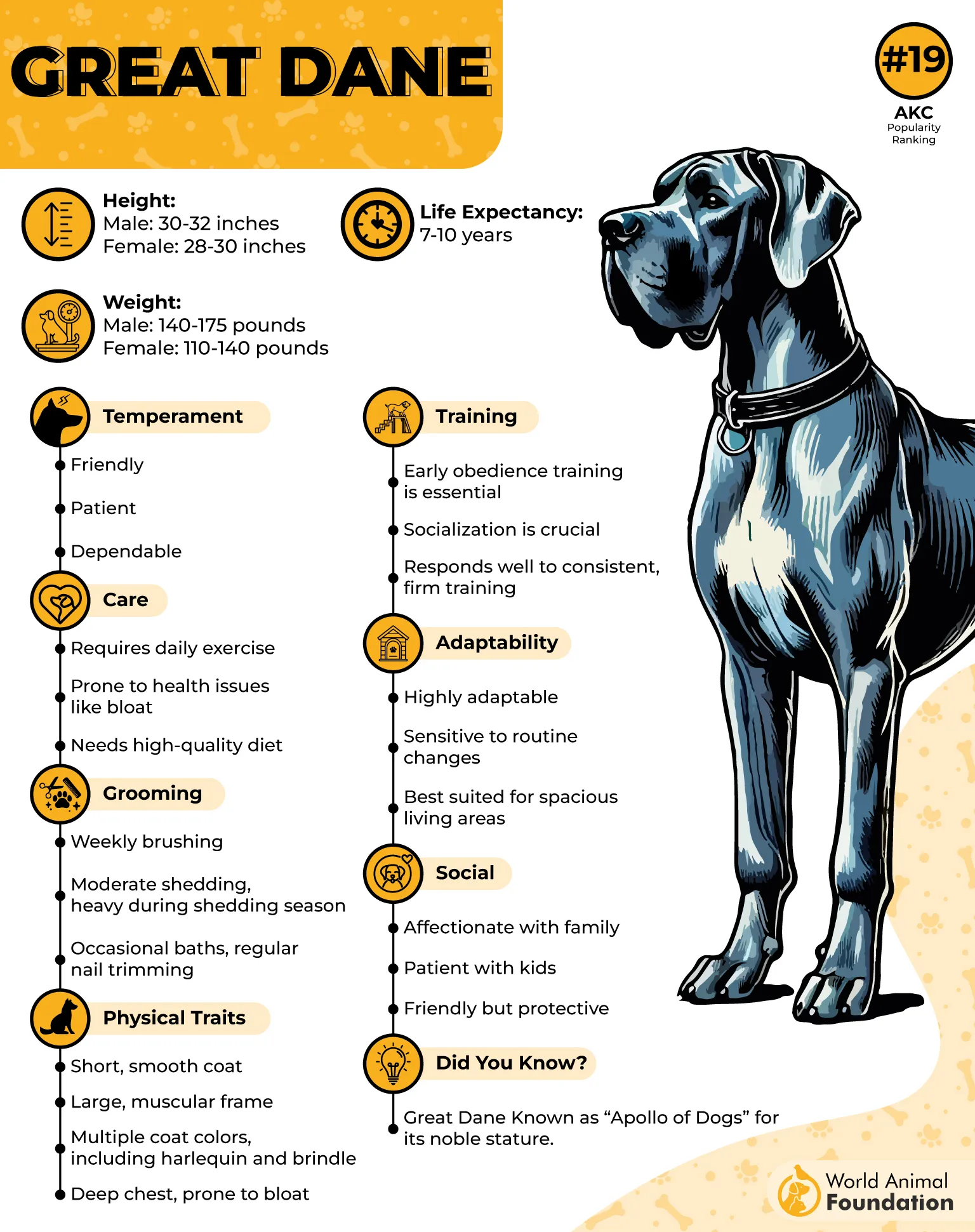
They’re generally great family dogs and can be good with children if properly trained and socialized early. Due to their large size, all interactions with kids should be supervised. They’re active enough to enjoy playtime and long walks, but mostly, they just want to be close to their humans, preferably while crushing your feet with love.
Grooming a Great Dane is relatively low-maintenance, but their sheer size means even weekly brushing and occasional baths can take up a fair bit of time.
7. Greater Swiss Mountain Dog
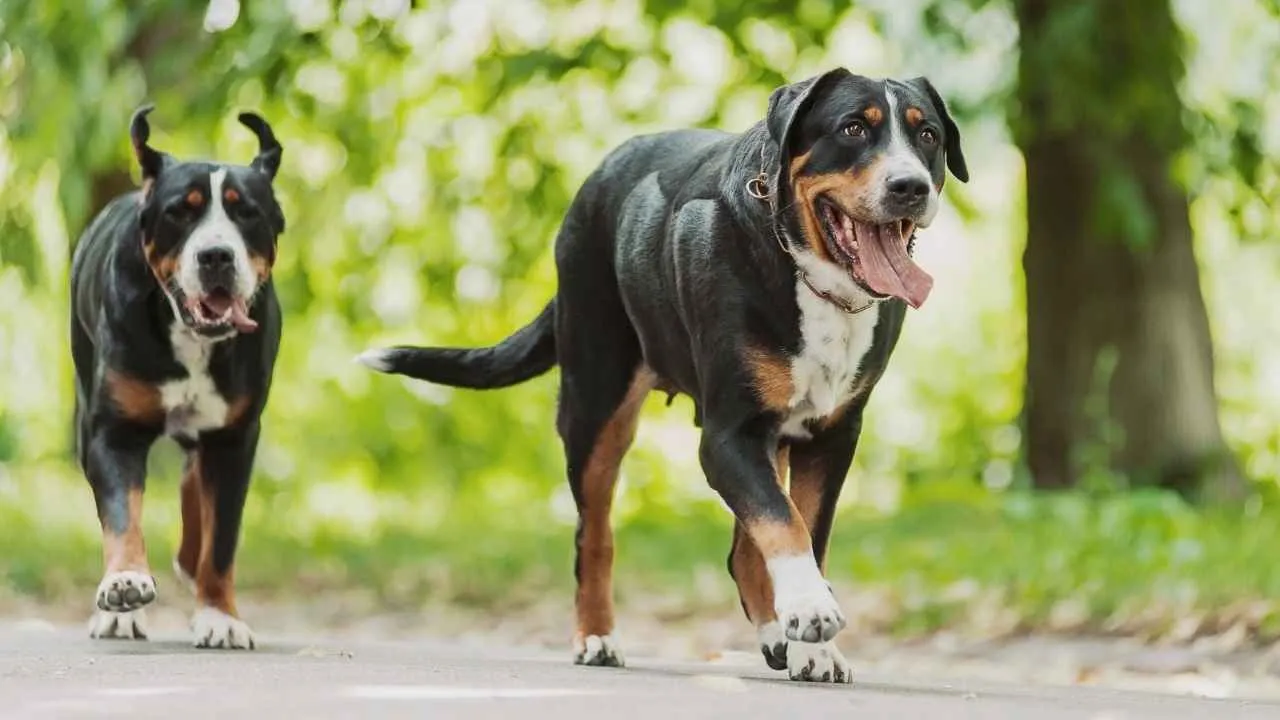
Your strong, Swiss-army-style best friend—ready to pull carts and melt hearts.
Height: 23.5–28.5 inches
Weight: 85–140 pounds
If you need a personal trainer, milk cart driver, and cuddle buddy all in one, the Greater Swiss Mountain Dog is your guy. Originally bred in the Swiss Alps to herd cattle, guard property, and pull heavy milk carts to cheese markets, this muscular working dog has serious multitasking energy.
Strong, confident, and always ready for action, the Swissy loves having a job—even if that job is walking the kids to school or supervising yard work. They’re loyal, affectionate, and have a protective nature without being aggressive, making them excellent companions.
Swissies have bursts of energy but aren’t hyperactive—they balance their activity with plenty of restful naps when they get enough exercise.
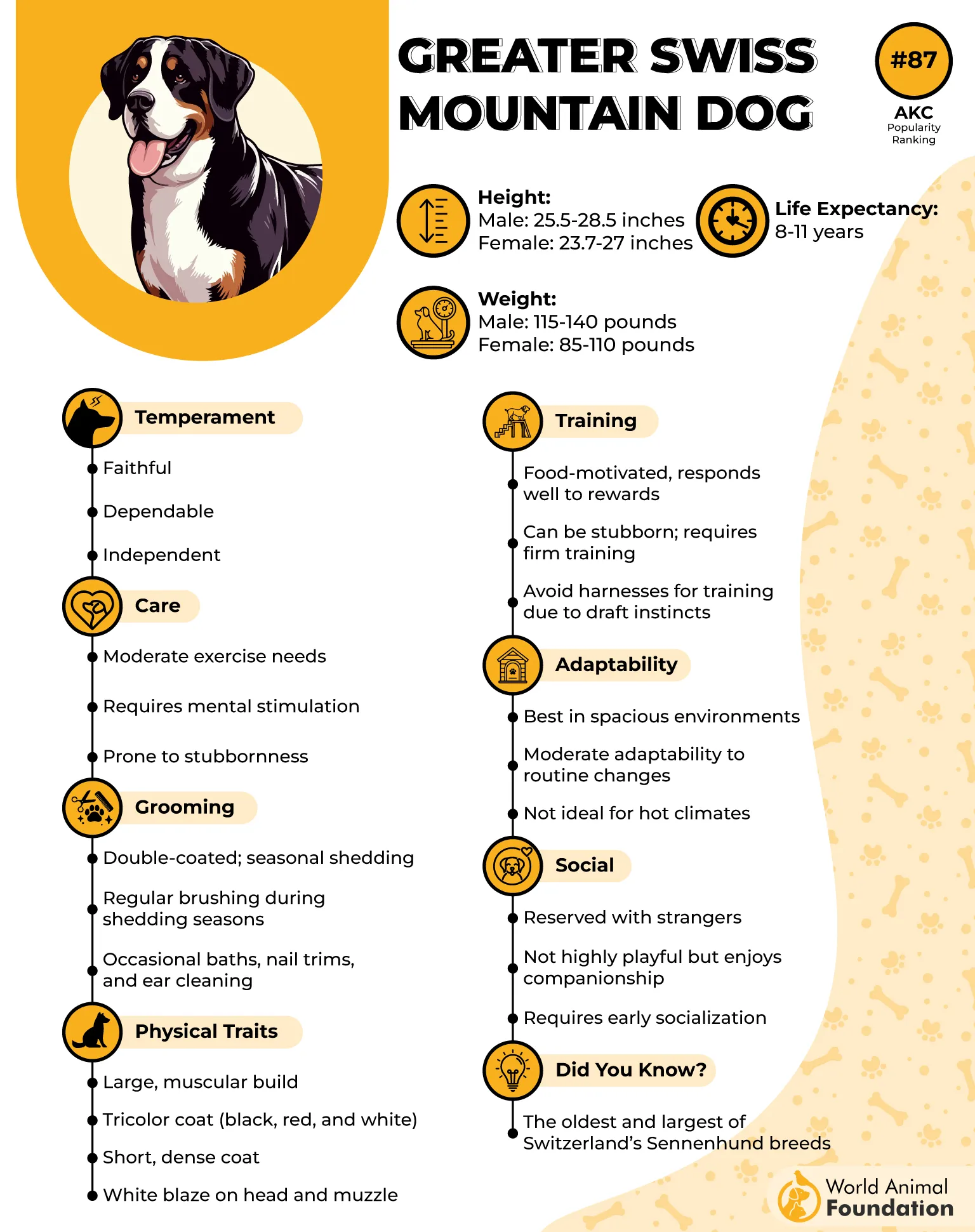
While they’re generally calm indoors, they do need daily exercise to burn off their working-dog energy levels. Long walks, hikes, or even pulling a loaded wagon (yes, they’ll love that) will keep them content and fit.
Greater Swiss Mountain Dogs are always alert and will bark if something seems off. Generally friendly, they welcome new people well if properly socialized as puppies. With their strong herding instincts, early training is important to prevent them from chasing smaller animals like cats.
Just be ready to provide enough space, structure, more exercise, and a sturdy leash—because once this powerhouse of a pup gets moving, they’re not stopping until the cheese is delivered.
Conclusion
When it comes to finding the perfect companion for an active lifestyle, active XL (extra-large) dog breeds are among the best dog breeds you can choose. Known for their athletic ability, gentle nature, and loyalty, large dog breeds like the Bernese Mountain Dog, Golden Retrievers, German Shepherds, and Labrador Retrievers offer the energy and enthusiasm needed for vigorous exercise and outdoor adventures. These big dogs are not just powerful — they’re also highly intelligent, highly trainable, and make excellent family companions with early socialisation.
Breeds such as the Siberian Husky, Alaskan Malamute, and Saint Bernard were originally bred as sled dogs or cold-weather workers, equipped with a thick or double coat to withstand harsh climates. Others, like the Australian Shepherd, Border Collies, and German Shorthaired Pointer, are top choices for those seeking hunting dogs or perfect exercise companions.
While some of these large dog breeds may not be ideal for a small apartment, they thrive in homes that offer space, regular grooming, and plenty of daily activity. These big breeds are often more suited to families with yards or access to outdoor spaces, but with the right dog and the right training, even their smaller counterparts or other breeds can be adapted to various living situations.


